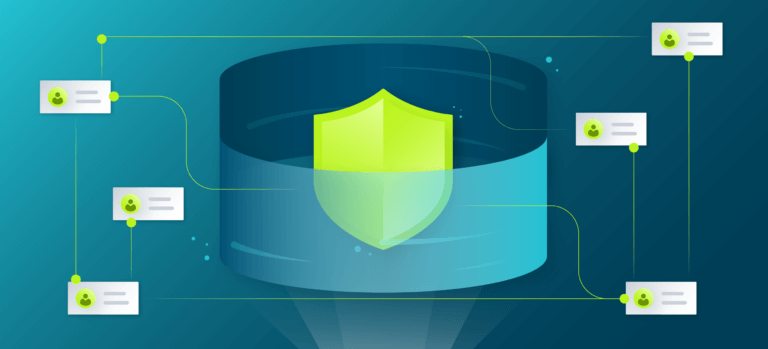James Riddle and Barbara Schneider Delve into the Different Players Involved in Reviewing Clinical Research

About the Advarra In Conversations With…
The future of healthcare innovation hinges on research and clinical trials. Advarra sits down with leading experts to dig into pressing issues and explore cornerstone solutions. Join us as we discuss topics and trends impacting the healthcare of tomorrow and advancing clinical research to be safer, smarter, faster.
About This Episode:
In this episode, Advarra experts James Riddle and Barbara Schneider delve into the different research oversight committees and functions that ensure clinical trials are safe for participants throughout the life of the trial.
Discussions with:

James Riddle
MCSE, CIP, CPIA, CRQM
VP of Research Services & Strategic Consulting
Advarra

Barbara Schneider
PhD, MBA
Executive Director of Biostatistical Services
Advarra
Episode Transcript:
James Riddle (00:04): Hello, and welcome everybody to Advarra’s sixth episode of “In Conversations With.” Glad that you were able to join us for this podcast. I’m really excited to be talking about a topic that is near and dear to my heart and I’m also very pleased to be joined by Barbara who’s going to be with us talking about data monitoring committees and other topics of interest so with that, let me hand it over to Barbara to introduce yourself, and then I will do some introductions and we’ll get going here.
Barbara Schneider (00:33): Thanks James and thanks for inviting me to participate in this podcast, I really appreciate it. My name is Barbara Schneider and I am the Executive Director of Biostatistical Services here at Advarra.
James Riddle (0:44): Alright, and I’m James Riddle, I’m the Vice President of Research Services and Strategic Consulting at Advarra.
Today we’re going to be talking about the different oversight committees and functions in clinical research. We’ll talk a little bit about the different focuses that those independent bodies have, and we’ll also talk just a little bit about how a drug goes from idea to approval and what processes are involved in getting that to market, while all at the same time making sure that the participants who are in that research are protected during the process. So, really exciting topic. Barbara are you ready to dive in?
Barbara Schneider (01:27): I sure am.
James Riddle (01:28) All right, well let’s start off with a basic overview for the folks who are listening to the podcast who may not necessarily be intricately involved with clinical research like we are, it always seems to help to get an idea of what’s the overall process for how to get a drug or a device from idea and conception, all the way through to the point where you’re picking it up at the Walgreens in the little bottle. So we’re going to cover here, in this first segment of the podcast some of the various players, what role do they play, and how do you get from end to end? So, I’m going to start here just to give a very broad overview.
So here in the United States, the United States Food and Drug Administration has the authority to approve new drugs and devices. There’s a corresponding body over in the European Union (let’s stick to the US FDA). So US FDA to approve a drug, has to be able to determine whether that drug or device is safe and effective. Those are the two thresholds that the FDA is charged with looking at.
So if you are a pharmaceutical company or device manufacturer and you want to be able to legally market your drug or device here in the United States, you have to convince the US Food and Drug Administration that your drug is safe and effective. The way you do that for the US FDA is the FDA insists that you test your drug or device on research participants. You have to be able to prove to the FDA that it’s safe and effective and the way that you do that, if you do, clinical trials that involve regular folks or people with a certain disease condition volunteering to participate in the research trial to help the pharmaceutical company or the device manufacturer figure out whether something is safe and effective. The most recent example of this is the COVID research. I think everybody who’s listening to the podcast unless you were under a rock somewhere knows there’s been a pandemic going on, and we have been rushing along trying to get a new vaccine.
So pharmaceutical companies, when developing the new vaccine, have to be able to prove safety and efficacy. They have to conduct research in order to gather that data. That’s where independent oversight committees come into play. For research involving humans here in the United States, many protocols/research trials are required to have various independent oversight committees and we’re going to talk more about these throughout the course of the podcast so don’t worry that’s coming up.
All of that leads up to FDA approval of the drug and marketing. Now, anecdotally you probably have heard of an Emergency Use Authorization—that was very popular in the news with COVID. Emergency Use Authorization is very hard to say first of all, and second, it is the FDA way of saying “a drug that hasn’t been yet approved, proven safe and effective.” Maybe it’s been proven safe, but we don’t know if it’s effective yet is okay to use because it’s in the public’s best interest to use it. The COVID vaccine fell into that category.
Emergency Use Authorizations will more likely than not turn into a full approval. So, in the rest of the podcast what we’re going to talk about in the approval process is how the clinical trials are overseen by various independent oversight committees, what role do they play, and how does that impact the public trust of clinical trials and how the public perceives what’s going on in research. Clinical research is vitally important to the advancement of medicine and to the improvement of human health. If we don’t experiment, we’ll never have new cures. We need to be able to test these new therapeutics and new devices and that involves testing on humans and controlled safe and effective clinical trials.
So, with that we are going to focus primarily on the United States. There are additional rules and requirements that exist outside the United States that are fairly similar to how we handle things here in the US, but for the rest of the podcast we’re going to be focused specifically on the United States. So without further ado, with that backdrop, let’s talk about when a pharmaceutical company is going to conduct research, what kind of oversight exists for those clinical trials, what do the various oversight committees do, and how do they protect participants that are occurring. I’m going to kick it off and talk a little bit about institutional review boards or ethics committees. Barbara and I are going to have a little bit of a conversation about the various committees in the role that they play.
James Riddle (06:40): First and foremost, US FDA mandates that any clinical investigation read that as research trial clinical trial, however you’d like to adjust the terminology. Any clinical investigation needs to be overseen by an IRB. What is an IRB? IRB is short for institutional review board. In essence, it’s an independent medical ethics oversight committee, it is a group of people that look at the research plan and evaluate the plan to make sure that risks to the participants are minimized and that the participants are adequately informed about the potential risks and benefits that may occur in the course of the study. A group of people was made up of cross-section some scientists, some non-scientist, some folks who may be familiar with the compound, some folks who are just lay members. They will evaluate whether participants are being adequately informed and appropriately protected in the research. That’s committee number one: IRB looking over all of the research. When it comes to other ethics committees and oversight committees, there are additional boards that look at data, look at medical events, look at biosafety.
Barbara can you talk to us a little bit about what’s a data safety monitoring board, as we hear about that in both the COVID trials? Data safety monitoring boards came up in the news, it actually hit the headlines. We’ve also heard about data safety monitoring boards in other new drugs being approved by the FDA. So, what is a data safety monitoring board and what do they do?
Barbara Schneider (08:33): A data safety monitoring board can also be called a data monitoring committee. The purpose of those DSMBs are to review the data that is being collected during the clinical trial and making sure that the patients are safe that are involved in that study. So, it’s a little different, obviously, than the IRB which you get those approvals before the study ever starts. Now that you have the patient in the study, who’s going to oversee that? So the choice there is to have an independent data monitoring committee who will take those data and review them in an independent fashion and then be able to say “You know, based on what I’m seeing, I either don’t see any safety concerns or, there are safety concerns and we need to think about either amending the protocol or stopping the trial or whatever that concern might be.” So, the data safety monitoring board plays a really critical role in being able to ensure their safety during the course of that clinical trial, that study.
And when you think about a study, I don’t know if you want to talk about the different types of data, but there can be different arms in a study. So, there may be either different dose levels, or they may be a placebo control, and that means that the patients are getting zero drugs but they’re being treated the same as all the other patients. So when pharmaceutical companies are running those types of studies, then what they’re looking for is what type of outcomes did we have per dose, or what kind of adverse events (which are side effects) did we have at each of the dose levels. So this data safety monitoring board—what they do is they look at that data and they say you know it’s either safe or, hey we have questions or we have concerns, because during that clinical trial process that sponsor company or that pharmaceutical company—they don’t know what’s happening, they don’t know who’s on what arm, they don’t know who’s getting what drug level, they don’t know any of that information and they don’t analyze their study information—their data—until the very end.
So that’s what the DSMB does, is it helps the pharmaceutical company to ensure that based on the data that’s collected at a particular place in time, that there is no safety concerns and that the study should continue as planned.
James Riddle (10:59): That’s super interesting. So as the study is going on, and data is being collected, I suppose it’s possible that during the conduct of the study, we might find out that the people on the placebo are getting better than the people on the study drug. I suppose that could occur right?
Barbara Schneider (11:16): Yes, that absolutely could occur. That would definitely show no efficacy. The sponsor company would either want to know that or they may run what’s referred to as an interim analysis. An interim analysis is when the pharmaceutical company is actually wanting to know “hey, I’m going to run a quick analysis on the data we have, and based on that I’m going to have my DSMB look at that and tell us if we should continue, is there efficacy or should we not continue. So, the DSMB, really besides protecting the patients can really serve as a real help to the pharmaceutical company because clinical trials are extremely expensive to run so it gives them an insight (halfway through the trial or whenever they choose to run that interim analysis) to make sure they’re on the right path and don’t need to make adjustments along the way.
James Riddle (12:09): There’s another group that I’ve heard of recently that may not be quite as well known to the folks listening to the podcast and that’s something called an endpoint adjudication process or an endpoint adjudication committee. What is an endpoint adjudication committee, who are they, and what do they do?
Barbara Schneider (12:25): The endpoint adjudication committee is another form of safety oversight that happens, while the clinical trial is going on. So, what happens there is that they look at data on a patient-by-patient basis, whereas the DSMB is looking at all the data that’s overarching for that clinical trial. The EAC or the endpoint adjudication committee will drill down on a patient level, and they’ll look to see “okay this patient had this side effect, do we think that this side effect is related to the study medication, or do we think it’s related to the advancement of the disease state?” So their job is to make sure that on a patient by patient-level that the patients are safe. When you think about the two in tandem, the DSMB is looking at information on a macro level from a high umbrella over the top of the study and the EAC is looking at information on more of a microlevel down to the patient.
James Riddle (13:21): Would there always be a data safety monitoring board and endpoint together, or is there some cases where there may be one or the other?
Barbara Schneider (13:30): That’s a good question. They can actually run independent if that’s what the FDA is requesting from the sponsor company or they can be run in tandem. It really is whatever has been set up as the safety charter or the protocol for that particular study.
James Riddle (13:48): On the IRB side, the IRB is looking at what is the plan in the protocol for the independent oversight. Is there an independent endpoint adjudication process? Is there an independent data safety monitoring board? The IRB is then comparing that with what else is going on in the protocol: the consenting, the monitoring oversight, etc., to make sure the participants are protected when the risks are minimized as the study goes on. There’s another committee that I keep hearing about is the institutional biosafety committee.
That particular group looks at studies that are involving the introduction of genetically engineered materials into humans and not very many protocols involve gene therapy or in introducing genetically engineered materials into humans, but it’s becoming more common, and in circumstances where you are putting a genetically engineered material into a human for research purposes. An institutional biosafety committee comes into play as well that looking at the safety of the overall administration of the product, as well as the safety for the research staff that might be around it.
And at Advarra, if you want more information on these committees I’ll just point this out, you can always go to our website and look these up. There’s more information about these committees on the website, but as we’re going through and I’m thinking more about this like ensuring participant safety, making sure that participants who are altruistically volunteering themselves to participate in research.
It’s really important for me, being in this industry for 20 some odd years, it’s really important for me to know that if I’m going to participate in a clinical trial that there are other groups of people that are out there looking out for me. Somebody other than the in addition to the regulators, and the sponsor who are also looking out for me as well, but there are these independent groups. So, I’m curious, Barbara as you’ve been around in this industry a long time as well, have you seen an increasing focus and attention on the utilization of these various independent oversight committees? Does it feel like we’re getting more of this in clinical research as time goes on?
Barbara Schneider (16:10): Yeah, I believe that’s true. Way back, you know, like 20 years ago, data monitoring committees or DSMBs, were really prevalent in high-risk populations, or in really sick populations, so if somebody has late-stage cancer or if it’s in a pregnant population or children, that’s when you would see the data safety monitoring boards. Now we see them on most phase three and a lot of the phase two studies also. We’re also starting to see, especially since the COVID pandemic, where people started talking about data safety monitoring boards, we’re starting to see them even more. I think what they do, in my opinion, is that they help to build public trust in the process and that it’s not just the sponsor company, who looks to gain from the product being put on the market and it being sold that can go pick it up at CVS or Walgreens or wherever. It shows that there is somebody besides them just an independent board of physician experts who can review that information and from a clinical perspective say, “I believe this product is safe.” I think going forward, we probably hopefully would start to see that on just about every clinical trial now that it’s kind of become very popular in the news.
James Riddle (17:28): Well, and that is I have to say that’s encouraging to me because, for the 20 years ago, as you were saying, the IRB was providing independent oversight, the sponsor by at large, except for really risky studies didn’t perhaps get these extra independent oversight committees involved. And now you’ve got a trio of groups all working together to make sure that there’s adequate independent oversight over the study. Participants can feel comforted or at least assured that somebody is looking out for them and that the medical judgment that might be needed in order to determine whether a drug works or not, at a particular case by case basis, the endpoint adjudication folks are looking at that.
The overall broad picture statistical analysis of whether worldwide all of the people who are taking this research drug or whether is it working, is it not working, is it working better than we thought, worse than we thought, that’s all being overseen by an independent group of folks who are looking at the data. And you have the IRB ensuring from the beginning that folks are adequately informed of the risks of participating in the trial. You’ve got the IRB overseeing on a continuing basis that the independent data monitoring committees and endpoint adjudication committees and the other activities that occur in the trial are ongoing through the continuing review process. You also have the IRBs looking over the conduct of the study. Are there issues with the study or the way that it’s being conducted? And IRBs looking at that throughout the life of the trial. All of that information that’s gathered through the trial with all of the protections and it all goes back to submitting that information to the US FDA or other regulatory agencies but we’re keeping it to the US here for this podcast maybe we’ll do another podcast on international regulatory compliance.
But we’re keeping it to the US here. All of that data gets put back into information to the US FDA and the really smart folks at the US FDA are evaluating that data to be able to determine, is the drug safe and effective and, ultimately, if they approve it we’re going to start as a society being able to go down to the CVS and pick up this drug in the pill bottle or going to the hospital and getting the stent implanted into us, or what have you.
It’s really important that that data is accurate, appropriately gathered, and that the participants who go into the studies feel like they can trust the process. And I’m encouraged to hear more about how the data monitoring and endpoint adjudication committees are contributing to that process because without the trust of the individual participants that are enrolling in the clinical trials, we wouldn’t have the data to be able to determine whether the drug works or not.
So, all of those folks who actively signed up for and participated in the COVID trials, thank you. Everybody else who might be listening to the podcast who’s participated in clinical research, thank you. All of the rest of us. We’re very much appreciative of the data that you’ve contributed and, in some cases, the risks that you’ve taken in order to contribute to the overall betterment of clinical research.
And so, I’d like to just wrap up with a conversation here with Barbara. Barbara when you think about data collection and data being collected outside of the traditional clinic setting, does that have an impact on the way that the data safety monitoring board might think about the design of the data? Or do the data safety monitoring board, I mean they trust the IRB to ensure that the data is being collected in such a way that is meaningful and good, or are we both looking at that?
Barbara Schneider (21:38): The data safety monitoring board definitely looks at the protocol and they want to make sure that it makes sense. When we’re thinking about the members who serve on a data safety monitoring board they’re usually expert physicians who are therapeutically specific to that protocol. So, they’re a really good resource for the company that’s putting that protocol together with the drug company or device company. To be able to provide them feedback on is that really how it’s done in clinical practice because you don’t want your protocol to be set up, you’re able to get through your protocol, but it makes no sense when you’re done from a clinical perspective and how that product would normally be used or what patients would actually be participating in the use of that product. So definitely DSMBs will look at a protocol and provide feedback on those protocols to make sure that it makes sense.
Their job, ultimately, is to be that safety oversight during the clinical trial. But they do help at the beginning if they’re if they are brought in early enough. Sometimes companies won’t bring a DSMB until after you know they’ve set the protocol up they’ve gotten it approved they’ve gotten all these things done, and then they bring the DSMB. It’s always helpful if they have at least their feedback because it’s a different group of people than who might be serving on an IRB.
James Riddle (23:01): Barbara, it’s been great to have an opportunity to talk about the different groups that are involved in clinical research. I really hope that the folks who are listening to the podcast whether you’re a patient getting medical treatment and considering participating in clinical research as a participant, or you’ve participated in clinical research in the past, again, thank you. But just so you know that the team at Advarra and other groups that administer these independent oversight committees, we always have patient safety top of mind, that is in our mission, it is part of our culture at the organization and we work really hard to make sure that the trials that folks are participating in are as safe and as quick and effective as they possibly can be.
So I imagine that we will continue this conversation sometime soon because it’s an interesting topic and it’s an ever-evolving area of discussion of how these various independent oversight groups work together and how clinical research is evolving in the time of mobile research, virtual trials, etc. So Barbara, thank you for joining us, thank you for all of the folks who are listening, I hope that we can continue the conversation again sometime soon.
Barbara Schneider (24:26): Thanks, James, for inviting me, I had a great time.
James Riddle (24:29): All right well let’s go ahead and close. If you’d like additional information on any of the other topics, or any of the topics that are in this particular podcast you can find those at Advarra.com, thank you for attending and listening and we’ll catch you the next time.


